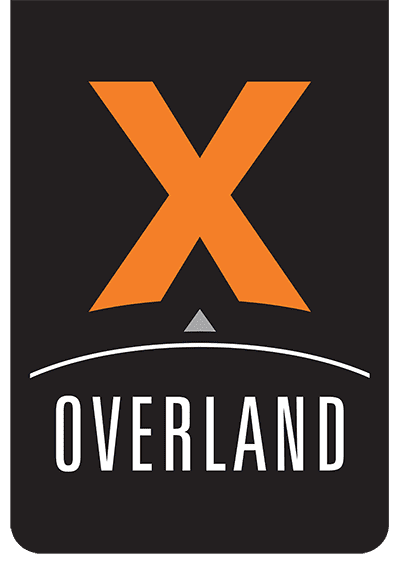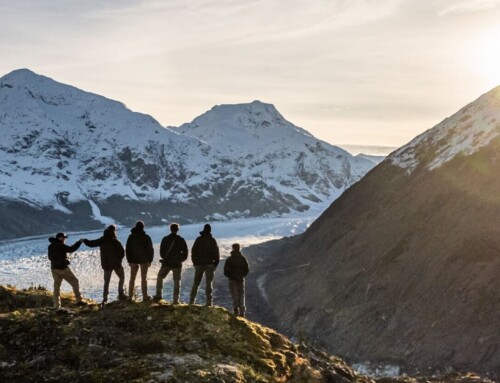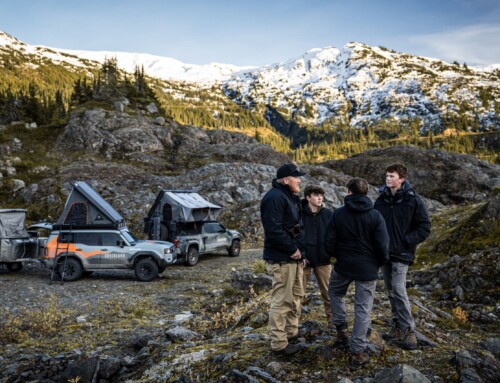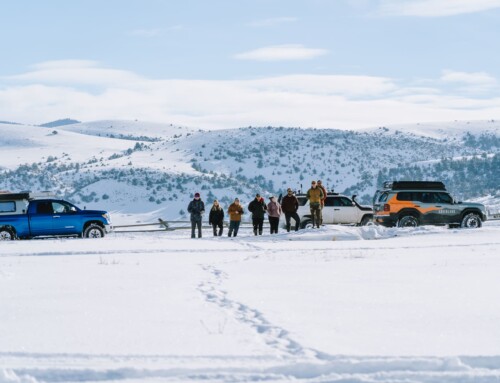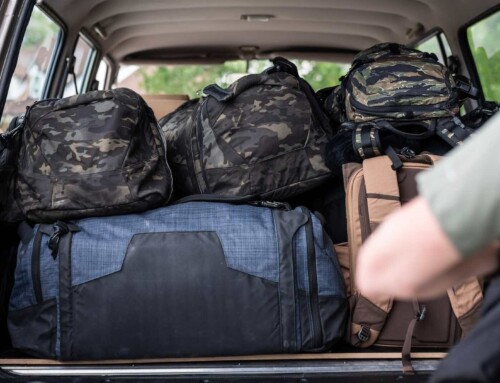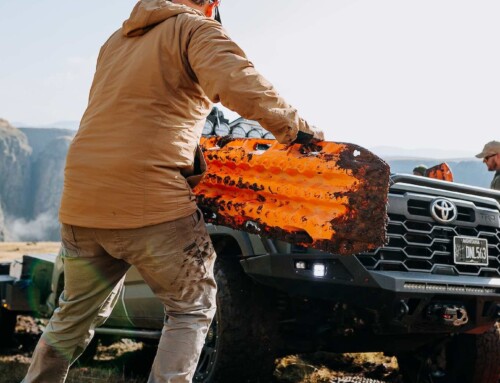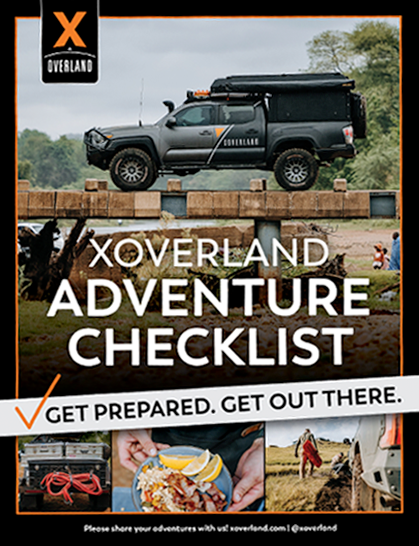Camp Cooking Philosophy
What are your earliest memories of camp cooking? A hot dog on a whittled stick roasted over an open fire? Some hamburgers pan-fried over a propane stove? A bologna sandwich with “Wonderbread”? Maybe a “smore” for dessert?
Perhaps the closest you came to camp cooking was a backyard cookout with your Uncle Gus featuring some Barbeque chicken on a Weber grill loaded up with charcoal briquettes soaked with lighter fluid you can still taste years later and some some semi-soggy sliced watermelon with a cold can of Coke.
Or maybe when you think of camp cooking, you think of a simple single-burner stove with a few freeze-dried meals to supplement your daily diet of beef jerky for the weekend.
Whatever your prior experience in camp culinary, now that you’re starting down the path of overlanding, a fresh opportunity to revisit your thoughts around food–and cooking it–awaits!
We overland to experience more of life, not less. So it is with food and overlanding. Why invest in an overland vehicle and work hard to develop the skills to drive it only to arrive at camp to an unsatisfying meal?
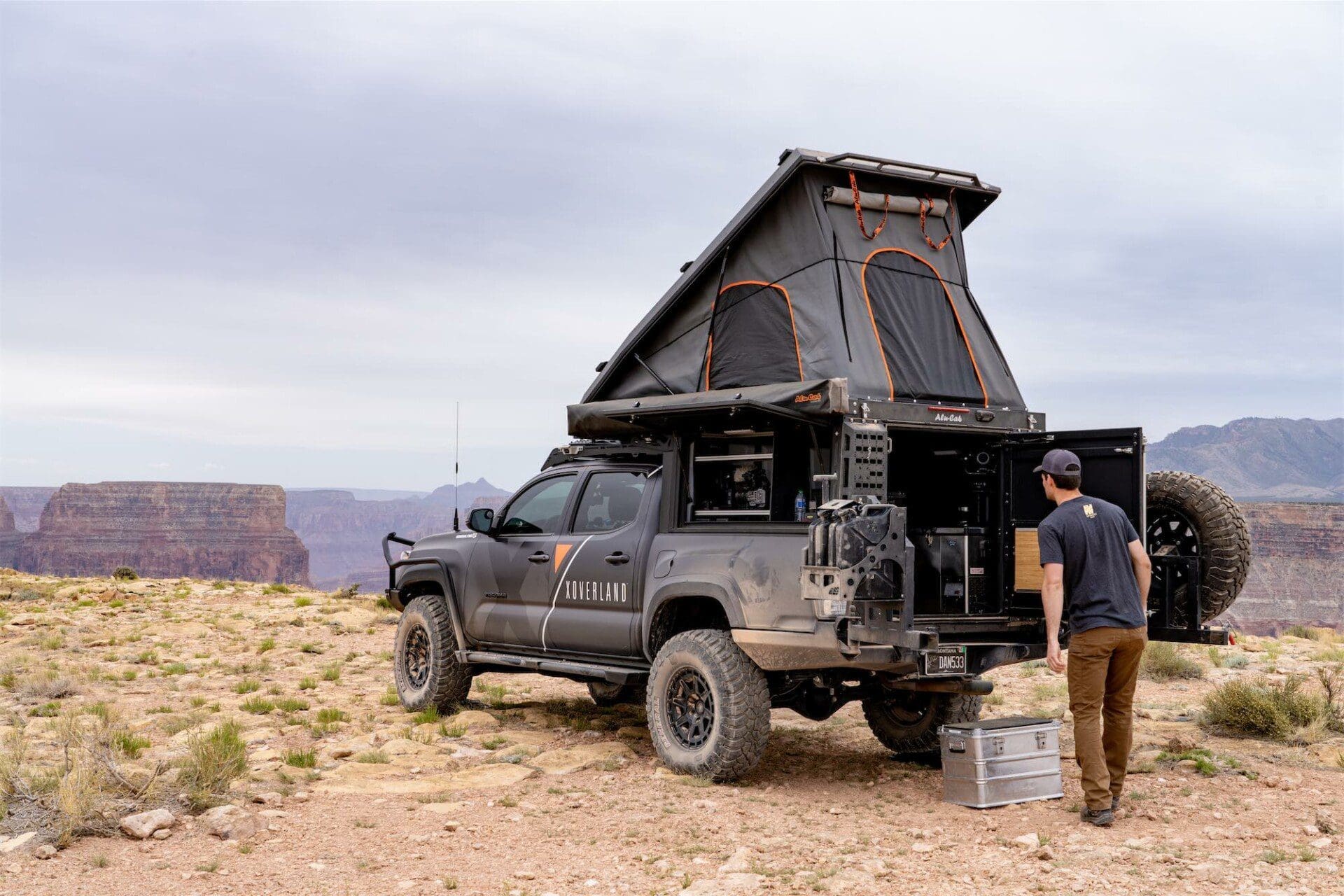
Now that you’ve made it to that special campsite, are you prepared to cook a meal worthy of your accomplishment?
Now that you found that pristine spot–took a wrong turn or two, got yourself unstuck, made it up the dicey trail, put some tree-branch pinstriping on your rig, and repaired a flat tire or two, it’s time to cook a meal worthy of your accomplishments!
We’re here to make sure that when you roll out the galley and light the stove, you’re feeling inspired and confident. Bon appetit!
The Minimalist
Though a theme of this blog is to inspire all who read it to camp culinary greatness, we recognize that there are times when one may be overlanding for other reasons than to arrive in an Edenic location to chef up a delicious meal.
For example, you may be overlanding to experience as many places as you can see in a limited amount of time. You may be making a film like our team when on expedition, attempting to get those late evening shots when the light is perfect. You may be venturing into technical terrain that has you arriving into camp with a hard landing during the witching hour. You may be overlanding to a secret place where the trout rise late into the twilight or waking up before dawn to locate a bugling Rocky Mountain elk.
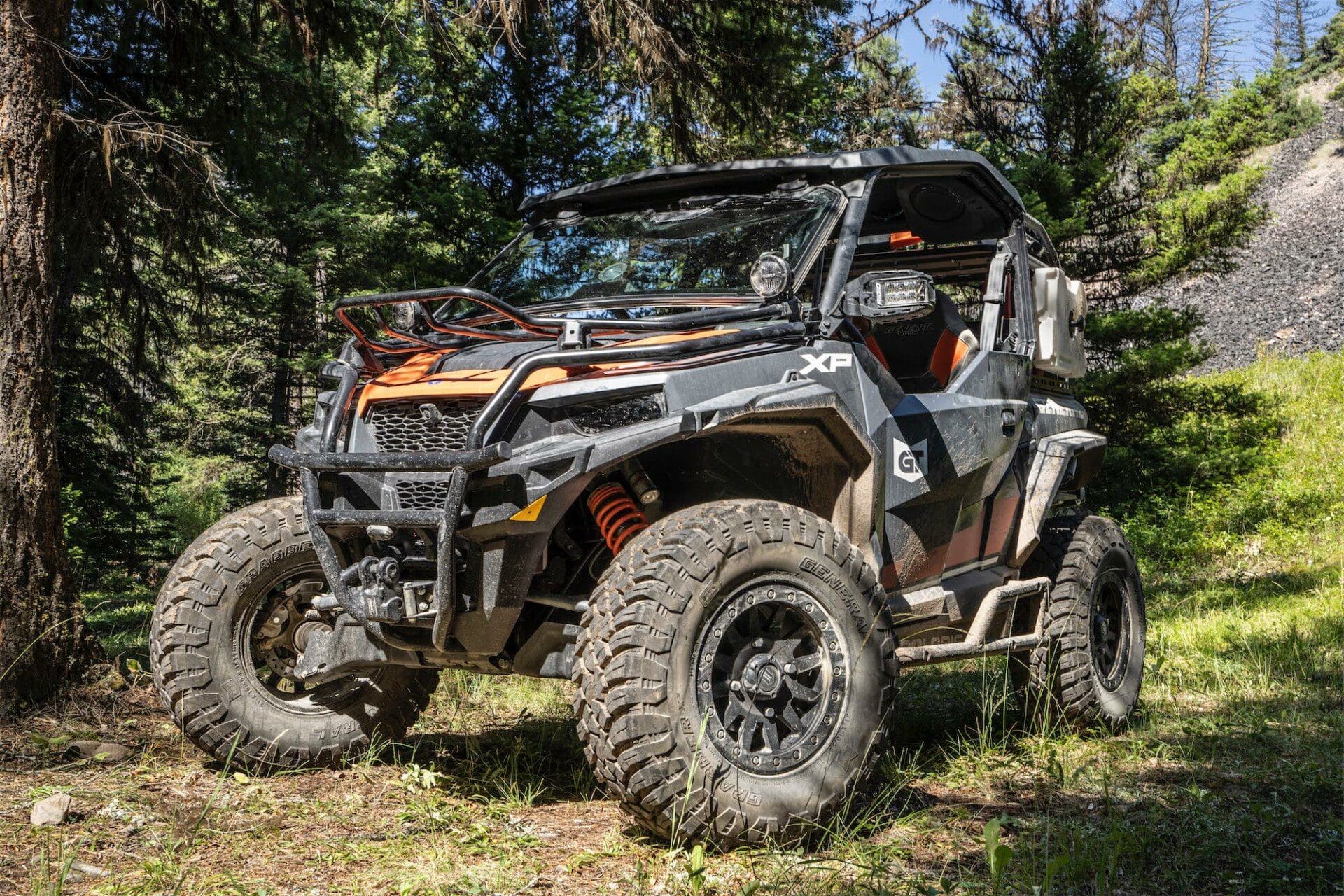
If your plan is to head out for a night in a small outfit, the minimalist approach to cooking may be the way to go.
Regardless of the reason, sometimes food takes a backseat to other experiences we’re craving. It is at these times that the minimalist approach meets your needs and keeps you going to do the things you came to do.
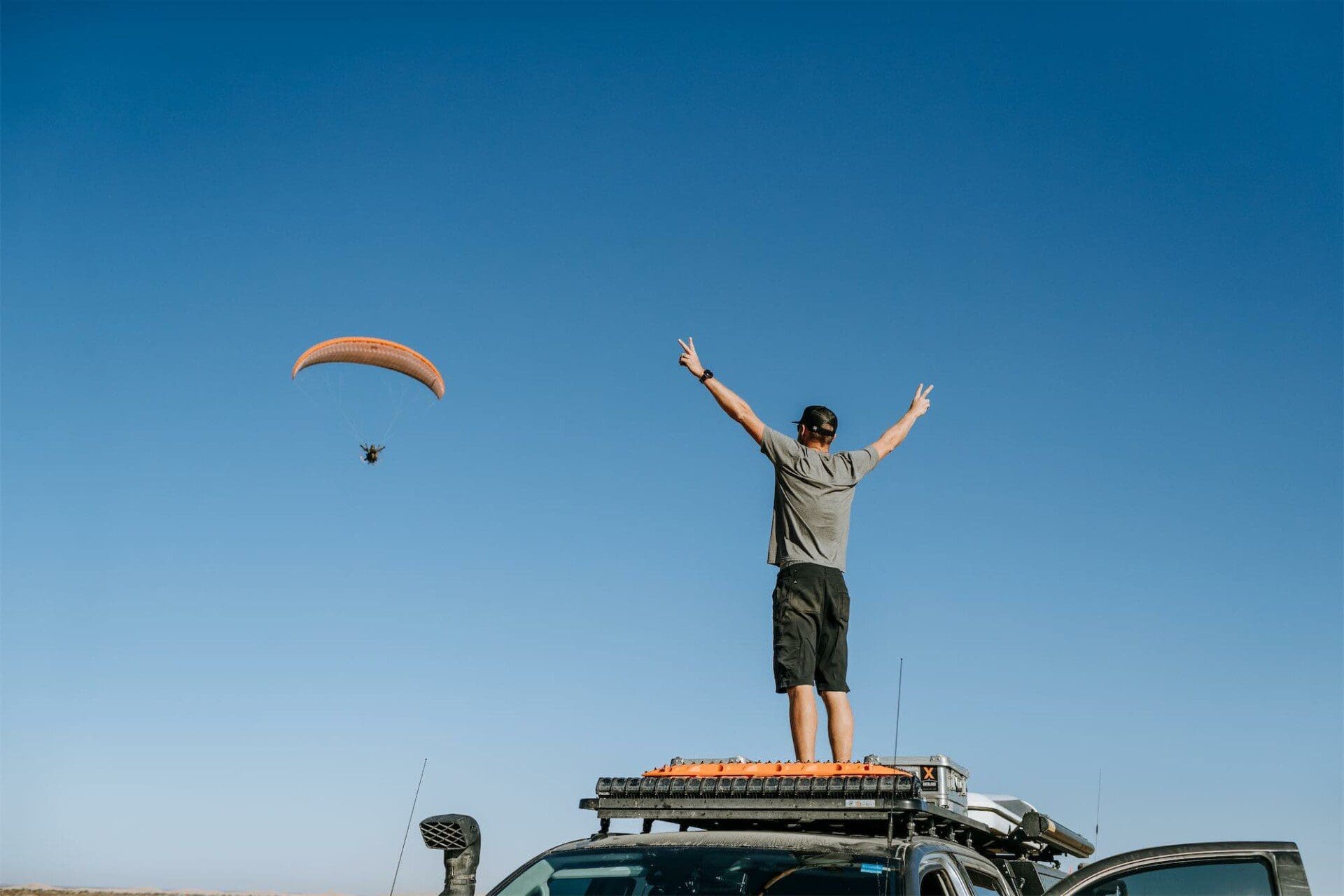
Sometimes we enjoy traveling to a remote area to do more than camp.
We recommend a single burner rapid deployment stove such as the popular Jetboil Flash to take care of the basics. With a Jetboil-style system, you can boil water quickly (100 seconds) that you can use to make a freeze-dried meal, quick cup of coffee, or a hearty bowl of instant oatmeal. Freeze-dried options are excellent nowadays, with myriad options for a variety of meals–even tasty desserts!
Add to this system some premium jerky, dehydrated fruit, nuts, and a bit of dark chocolate to snack on, and you have what you need to get after your pursuits while keeping cook and kitchen work to a minimum.
Camp Food Americana!
I don’t think you could call camp food Americana the “next step” up from a minimalist approach because, once you step up from spartan minimalist camp life, you typically step up in a big way.
What we’re talking about here is breaking out the franks and the beans, the burgers and the buns, the eggs and the bacon. You get the idea. Americana style camp cooking is the stuff with which we all grew up and still love on occasion.
It’s good news that there are far more options available today for these basic eats than there were a few decades ago. If you want high-quality premium hot dogs, brats, or hamburgers, you can find them at many grocery stores. Pair these with scratch-made buns or ciabatta rolls, gourmet ketchup and mustard, and homemade potato salad and you’ll have everyone in camp smiling!
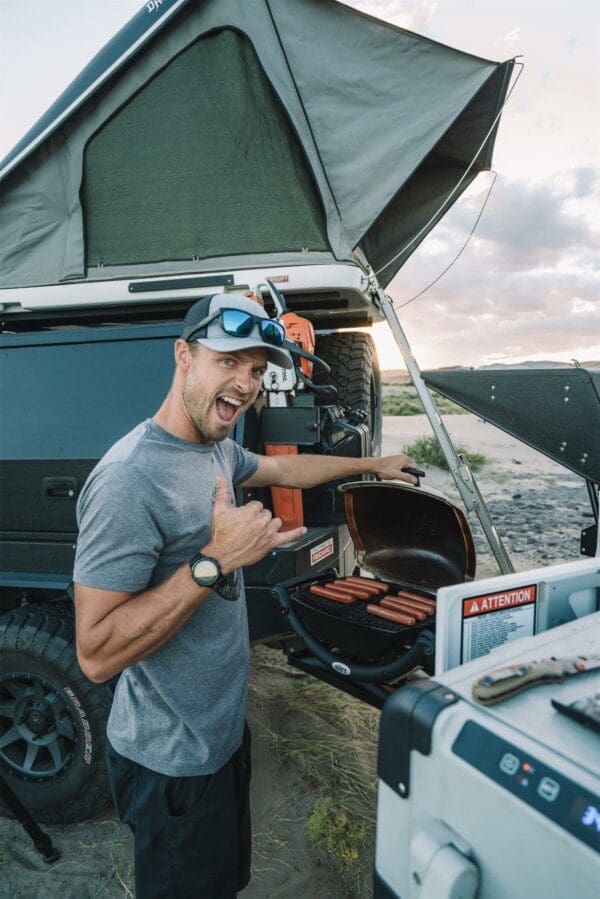
Superdads love to make the best hot dogs on the planet!
For dessert, why not enjoy a camp classic? The “S’more.” Some roasting sticks, chocolate, a bag of marshmallows, and graham crackers are all you need to make this cherished treat.
An added benefit of smores is that making them is an event for the whole crew. Everyone loves to try their hand at roasting marshmallows over an open fire and friendly competition typically breaks out for the perfect marshmallow roast.
To make the basic family camp happen, you’ll need a portable grill of your choice. There are myriads from which to choose, ranging widely in style and price. We encourage you to have a look at all of the options, but will offer that a simple propane-fueled Weber with a grate and a skillet is super-easy to use and gets the job done every time.
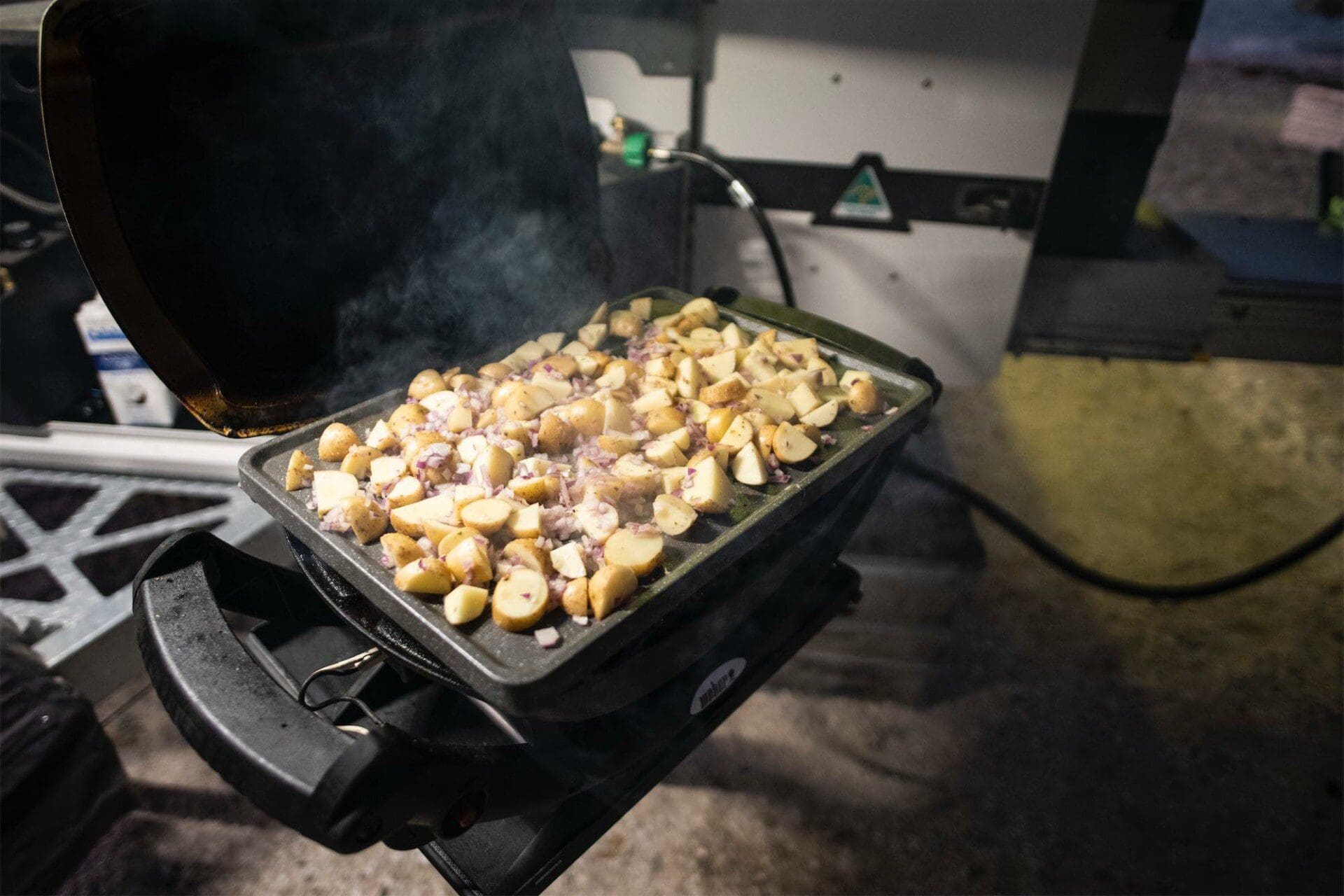
A simple gas grill with a grate and skillet is easy to operate and can cook just about anything.
You could also use a grate to place over an open fire or, for hot dogs and brats, you could simply use a roasting stick (commercially produced or hand-hewn).
We have found devices like Fireside Outdoor’s Pop-Up Fire Pit are perfect for campfire cooking due to their clean burning and ease of adding a grate once the coals are ready for cooking.
These portable campfire containers also save your campsite from damage caused by firepits and are the best approach for a Leave-No-Trace campfire experience.
Add to the above a quality cooler filled with your favorite store-bought potato salad, potato chips, a relish tray, and some beer and soft drinks and you’re ready for the delights of Americana camp cooking!
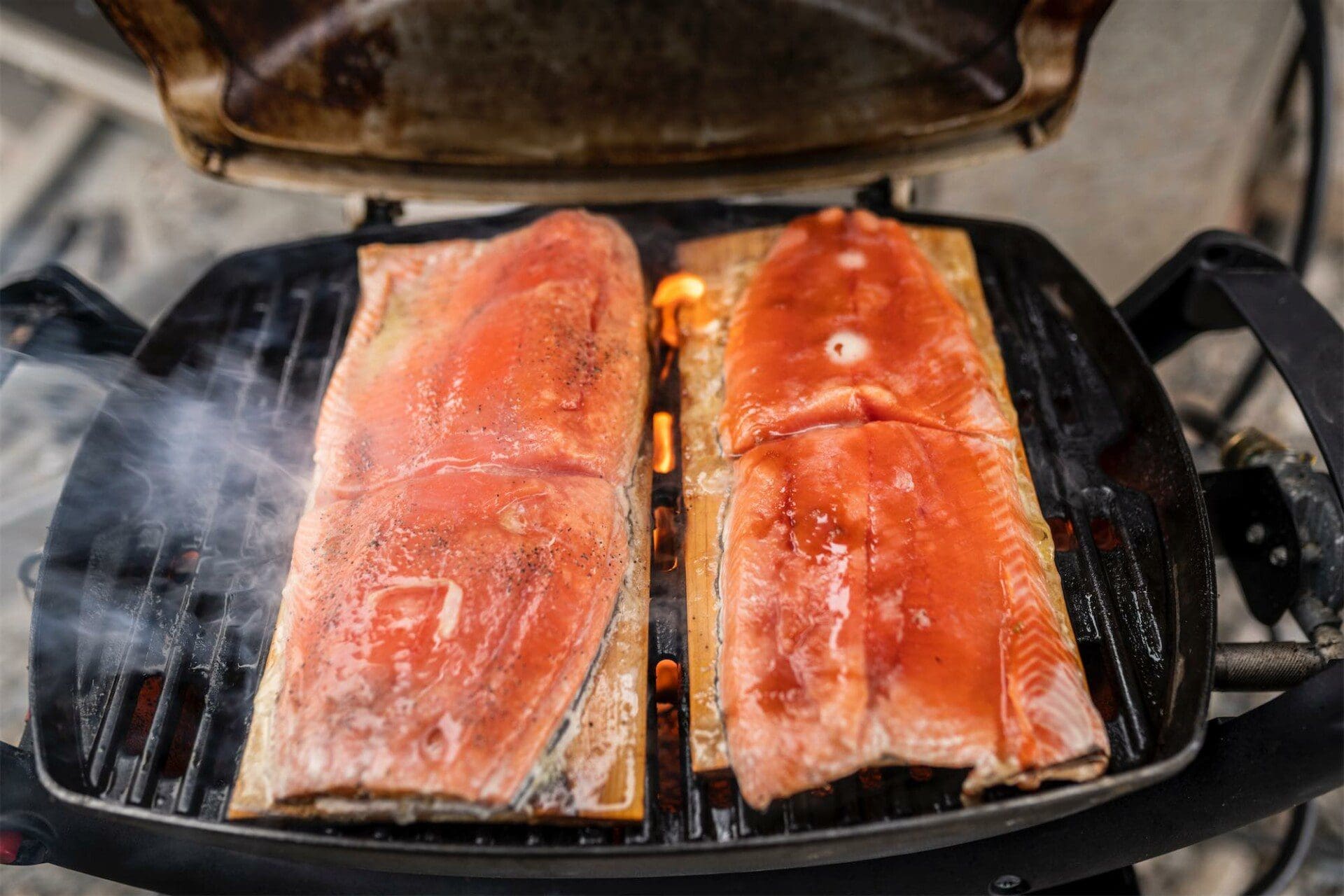
Burgers and hot dogs are great, but fresh caught salmon is a whole new level of culinary delight!
Camp Chef
If someone in your overlanding squad–a partner, family member, or beloved friend–gives you the moniker of “Camp Chef,” they have bestowed upon you a badge of honor. Once you have reached that milestone of culinary prowess, it is assured your camp meals will be something everyone looks forward to; it is also very likely you will find yourself invited on many an overlanding trip!
Unless we start overlanding with the skills of Gordon Ramsey, however, most of us have a long path ahead of us till we reach camp chef status. Regardless, like overlanding itself, the journey to becoming knowledgeable and skilled in the art of overland camp cooking is worth taking.
When we leave behind hamburgers and hot dogs and step up to camp chef level, a world of gustatory delight awaits. Along with the pleasures that come with gourmet cooking, however, are the more holistic benefits of eating well, like good health and lots of energy to hit the trail the next day.
There is a mindset shift here that moves beyond a weekend trip. If you head out Friday evening and return Sunday night, basic camp food is fine. Even a clinical dietitian can probably stomach hotdogs and hamburgers for one or two nights.
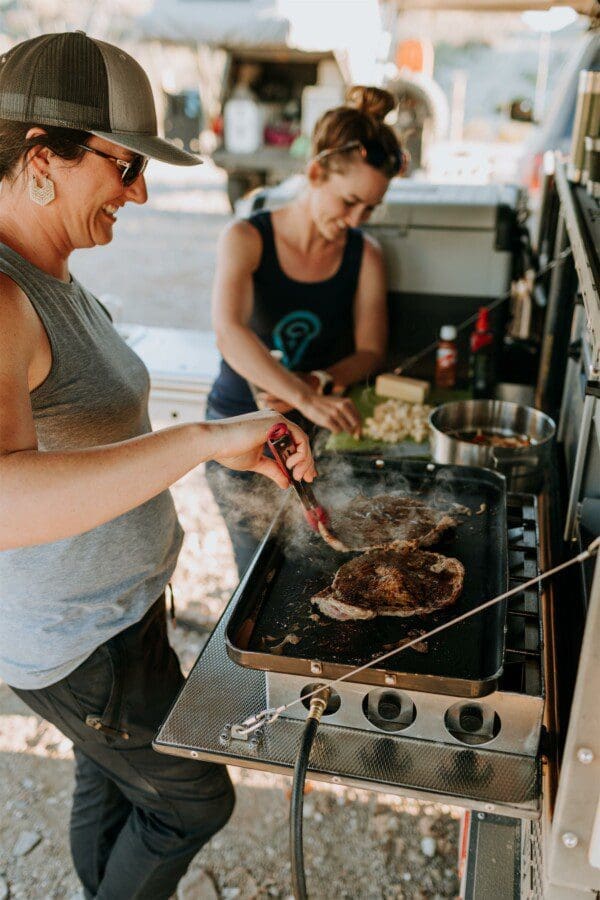
When Rachelle Croft and Ashley Giordano are in the overland kitchen, a gourmet experience is sure to follow!
Stay out for more than a few days, however, and you’ll start to crave healthy and tasty daily food that doesn’t leave you feeling like you’ve ingested a bottle of bacon grease.
Some good cold yogurt and crunchy granola with fresh fruit for breakfast to pair with a great cup of java (thinking summer camping here), some gourmet cheese, crackers, and grapes for lunch, maybe with some prosciutto?
For dinner, a pesto-pasta grilled chicken salad, freshly caught wild trout from a nearby lake or stream roasted with lemon-butter and fresh herbs, a grilled Margherita pizza, stuffed bell peppers roasted in a Dutch Oven, or some tasty quesadillas featuring fresh (never-frozen) ingredients? (Be sure you have a fishing license for where you’re fishing, and be sure to know the regulations affecting your chosen fishing spot.)
Here are several more gourmet camp options chosen by our team to get you started!
For Dinner
- Fire-roasted ribeye steaks rubbed with sea salt, with charred green beans and garlic smashed potatoes
- Fresh caught trout stuffed with home-smoked bacon, pine tree, butter, salt & pepper
- Caramelized pork chops with cooked apples and crispy hash browns on the side (tip: pack your meat thermometer!
- Dutch oven elk lasagna
For Breakfast
- Bagels and lox with capers and cream cheese
- Chipotle pork sausage breakfast burritos with peppers and onions
- Omnia stove top or dutch oven cinnamon rolls
- Mimosas!
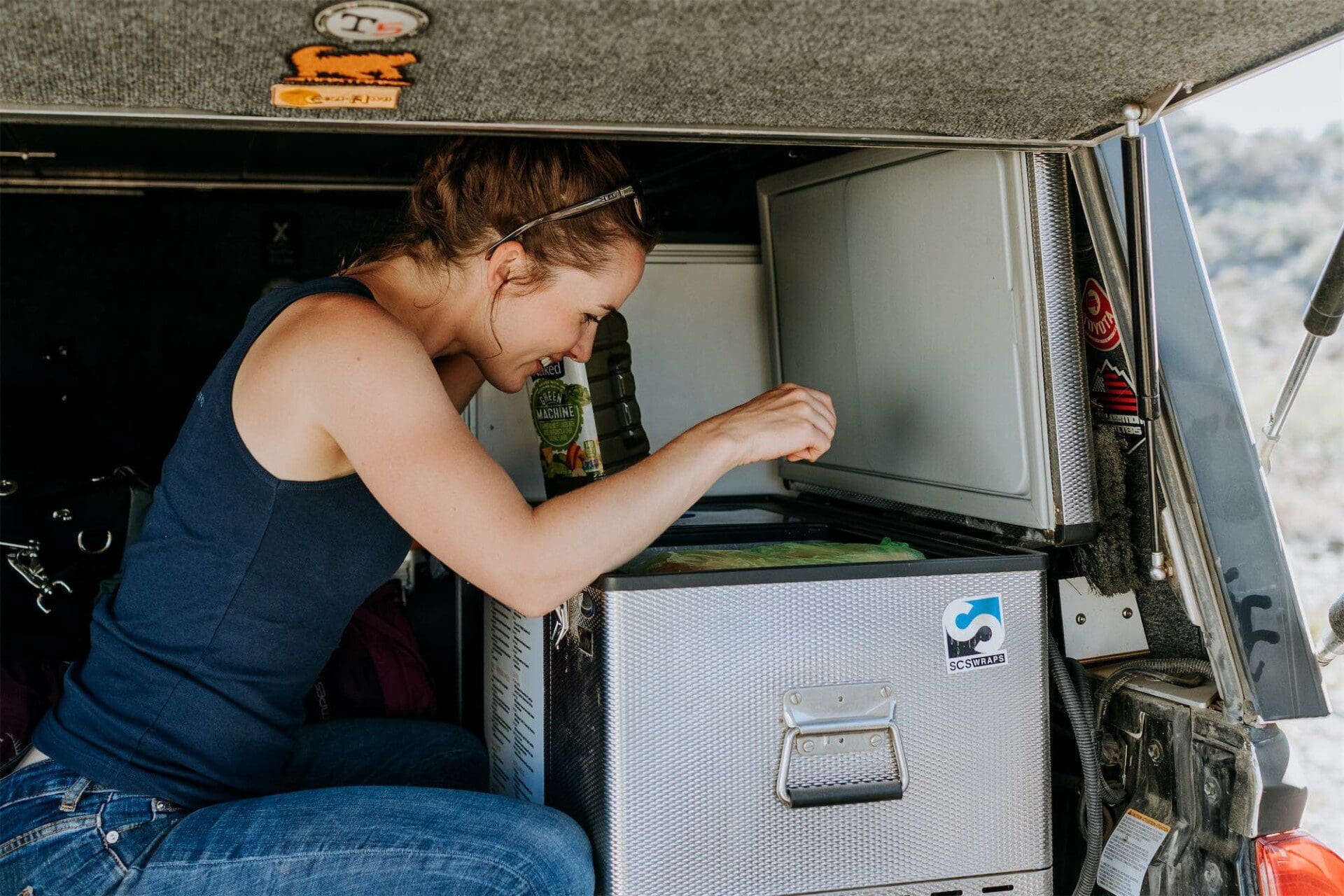
A powered fridge like this one by National Luna will expand your culinary capabilities and prevent food spoilage on longer trips.
Just like at home, to raise the culinary game in your overland cooking, you’ll have to study up, do some recipe research, learn some new skills and push yourself out of your comfort zone. Just like overlanding itself, right?
You’ll also probably want to add to your overland kitchen set-up. While there is much to dive into here (next blog!), you can make a good start with a well-made cutting board, a quality set of camp cutlery, and cooking equipment that allows for a bit more nuance in surface temperature than simply “off” and “on.”
You might also add a reliable means of refrigeration. At least a high-quality cooler (such as a Canyon Cooler) with ice packs that last for a few days, keeping foods tasty fresh. We like the fact that, when combined with padlocks, Canyon Coolers coolers are considered to be “bear-resistant” by the I.G.B.C. and may be stored outside of a vehicle in bear country.
Additional Approaches and Considerations for Camp Cooking
Meal Delivery Services
There are numerous companies that will pack up a ready-to-cook meal in a box and ship it to your doorstep. The quality is budget-dependent, but all are decent, and some are amazing.
You simply go online, choose your meals (breakfast, lunch, dinner, sides, pies, pastries, and whatever else suits your taste), and they’re shipped to your doorstep. Remove the food items from the box and place directly into your pre-chilled cooler and/or the refrigerator in your overland vehicle.
Most of these meals involve very little food prep, so you simply follow the directions and cook up the meal in less than 30 minutes.
While this experience may not be quite the same thing as camp cooking from scratch, the meals are excellent, you still get to have fun doing some cooking, the process is easy, and the quality is far better than basic camp fare. Very helpful if time is of the essence and you still want to eat well!
Cook at Home and Take Along
Do you have a favorite pasta recipe? Lasagna? A chile that’s to die for? Are you a master of slow-roasted pulled pork? Another option for overland camp cooking is to cook any one of these and much more ahead of time and pack along your meals for reheating.
Best practice is to vacuum-seal your servings and freeze until ready for use. Once in camp, simply heat up a pot of water and let thaw and warm till the desired temperature is reached. Cut open the bag and voila!
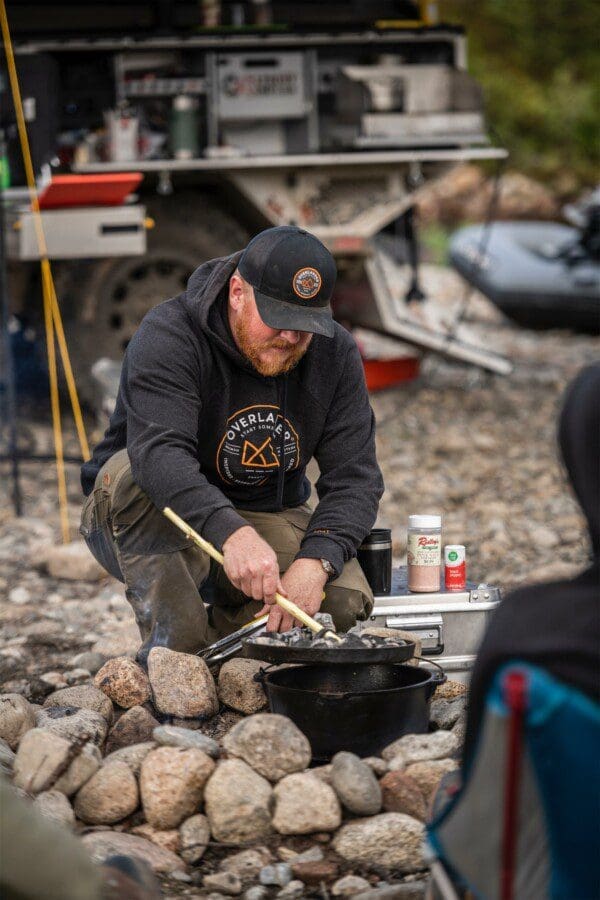
Sometimes you just have to go back to basics and cook with an open fire.
Final Pro-Tips for Overland Camp Cooking!
- Have lots of good drinking water on hand (and a means of obtaining it) for coffee, cooking, and drinking–staying well-hydrated is key while camping and overlanding! Pack along several gallons of spring water or filter your own. If using a storage tank, make sure to disinfect it occasionally with a bleach solution. If packing your own water, consider using a dedicated heavy-duty water carrier that will keep your water safe (no leaks and not easily punctured).
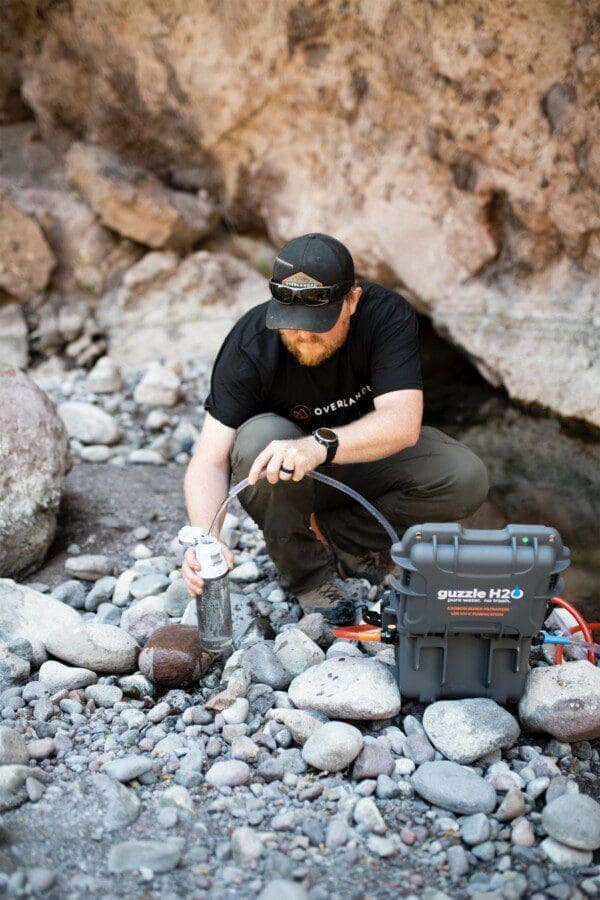
Having plenty of clean, fresh drinking water on hand is paramount to both good cooking and staying hydrated.
- It is always better to pack more food and water than you think you’ll need, especially if you have refrigeration, because nothing will spoil. This is analogous to packing along extra fuel. It’s there for emergencies and for the unexpected. If you get stuck, break down, or simply are in an amazing place and wish to stay a few days longer, you’ll be prepared.
- Fish, Hunt, and Gather for the ultimate locally-sourced meals! Pack along a fly rod and/or fishin’ pole, enjoy some fishing, and your party will get to enjoy a catch-of-the-day. If you’re out and about during the hunting season, consider harvesting a local game bird like a wild pheasant, grouse, or partridge. (Always check local rules and regulations affecting hunting and angling in the area you’re recreating.)

We love picking wild berries around camp for special treats like these huckleberry pancakes!
- If wild berries are in season, consider doing a little local foraging for berries to add to your pancakes, oatmeal, and maybe even a cocktail! Here in Montana, huckleberry picking is a summer tradition. Nothing beats freshly picked huckleberries in scratch-made pancakes or atop vanilla ice cream! (Please Note: It is imperative that you use a qualified field guide to edible plants and berries in whatever area you are overlanding as some berries can be toxic to humans and lead to severe illness and/or death.)
- Pack along some choice freeze-dried meals and a way of boiling water to use as an emergency supply of food. The freeze-dried is non-perishable, lightweight, and stores easily. All you need is water and means of heating it, and you’ll have food in a pinch. I see this as analogous to packing along a winter sleeping bag during the cold weather months, even if you have a heater in your camper/overland vehicle.
- Consider a strategy for your meals and nourishment while overlanding. Will breakfast be the biggest meal of the day or will dinner? I like a big dinner to relax at the end of the day and sleep well after, followed by an easy light breakfast and lunch while I’m most active during the day. Think about what activities you have planned and arrange your meals accordingly.
- If you have a large party, create a culinary team by giving people roles to fill and meals they are responsible for. This creates some fun friendly competition and prevents anyone from growing tired of their responsibilities.

If you’re traveling in a group, try assigning roles around cooking to keep everyone busy but not too busy!
- When meal planning for a trip, consider any food allergies someone in the party may have. For example, just imagine how the trip would go if you got to camp planning on cooking Chicken Alfredo only to find out that three out of five members in the group were lactose intolerant. No bueno!
- Regardless of having a well-stocked overland galley, make sure to get out and eat locally on occasion. Be part of the community, spend some money to support their economy, and experience local cultures. Local people appreciate that, and you’ll get a welcome break from cooking!
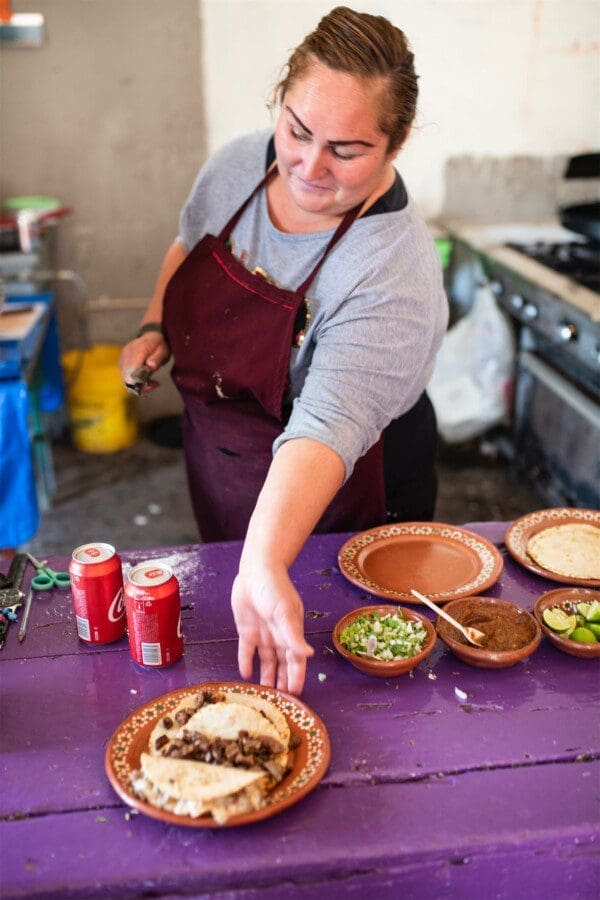
Be sure to give yourself a break from cooking on occasion, and sample the local fare!
- HAVE FUN! Camp cooking is a blast! It allows you to spend time meal planning with your partner, family, and overlanding buddies. You get to learn about the culinary arts and acquire some new skills. Most importantly, cooking well in camp means more overlanding pleasure for everyone in your party and makes for some of the best and most memorable meals of your life!
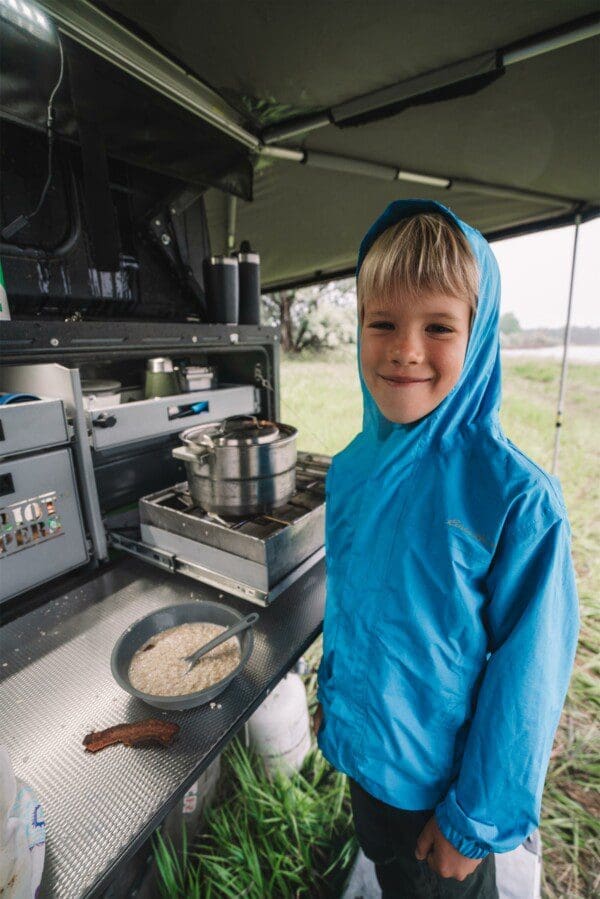
Camp cooking is all about bringing the smiles!
